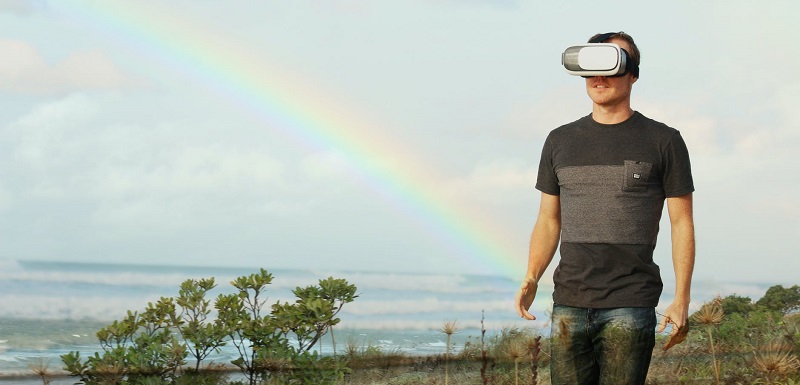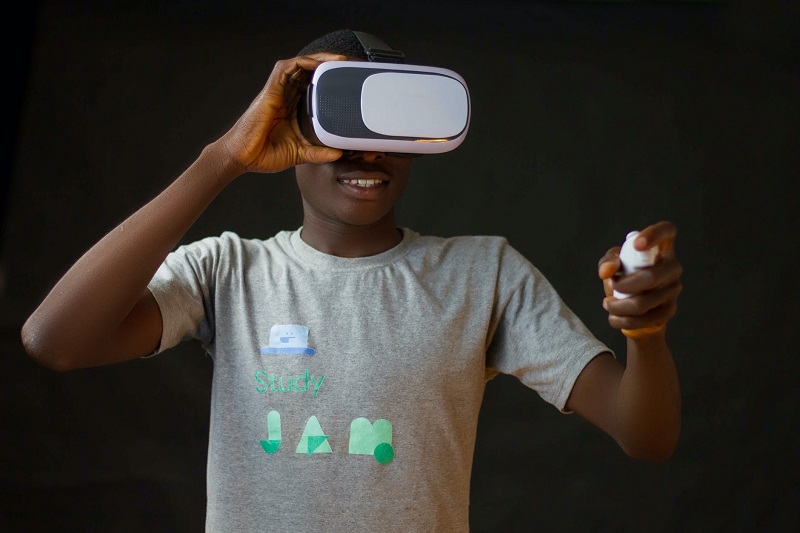- 200 years
- Study
- International
- Business and employers
- Research
- About us
Dr Natasha Moorhouse discusses what tourism marketers think of VR tech

Dr Natasha Moorhouse, research associate at Manchester Metropolitan University, considers whether virtual reality can help destinations market themselves
Originally published by Phocuswire, a news site covering technology and distribution in travel, tourism and hospitality.
By Dr Natasha Moorhouse, research associate at the Creative AR and VR Hub at Manchester Metropolitan University
The current pandemic has brought forth unprecedented and unpredictable change that presents new challenges for the tourism industry.
There remains uncertainty not only as to how transport and accommodation services are able to implement strategies to facilitate social distancing measures, but also around how the regulations and tests at international borders will operate.
As the tourism industry works hard to recover from the impact of the current pandemic, tourism marketers are responsible for implementing the right marketing strategy to ensure their destination remains competitive.
Generating destination appeal in new and existing markets is essential in determining a city, resort or region’s global competitive position and its overall economic and developmental success.
As trips become safer, people may need extra encouragement to travel again, and one promising way to do this is through novel immersive technology experiences.
Digital technologies influence change in consumer behavior including the way people search for, access and experience tourism-related content.
Alongside rapid technological advancements, mass media attention has brought virtual reality experiences into focus, leading to predictions that this technology will significantly influence the tourism sector.
Virtual reality allows for the simulation of places, and over the past few years, industry usage has rapidly increased in destinations around the world.
Virtual tours allow for a unique and immersive way to explore destinations and hotels, while virtual walk-throughs of heritage attractions permit people to explore inaccessible sites as well as cultural preservation.
This allows tourism marketers to communicate their intangible tourism experiences to potential travelers, which influences the customer’s decision on whether to visit the destination or attraction in real life.
After speaking with industry experts at several tourism marketing organisations in the northwest of England, I was able to get a better idea of their view on using virtual reality for marketing destinations.
One of the key drivers that would encourage them to adopt immersive technology would be its ability to attract key markets from around the world.
Virtual reality has the potential to generate awareness of the destination’s tourist offering in a novel, immersive way, and its use could set a destination apart from the increasing competition in the global market, if used strategically.
As one digital executive stated: “VR has the potential to attract international visitors and make them aware of the city product.”
Keeping ahead of competition is vital for tourism destinations, and the ability to gain an edge over rivals is considered a key driver for implementation.

Yet the challenge is to rapidly integrate this technology with existing communication channels such as a website and social media.
As they mainly operate online, tourism marketing organisations have to find a way to deliver immersive experiences and therefore rely on the mainstream adoption of virtual reality hardware and software – delivering content compatible with equipment the customer already has – so they question its ease of usability for their diverse audience.
Despite that, tourism marketers view this technology as useful in the future once the barriers have been overcome, which is promising, as developers and designers are working tirelessly to bring advanced virtual reality systems to the forefront of consumer adoption.
Streamlined, user-friendly virtual reality headsets with sophisticated software capabilities such as superior graphics, head-tracking and eye-tracking are already under development and could be the lead to increasing adoption for usage at home.
In line with this, the deployment of 5G throughout the United Kingdom could accelerate the uptake of virtual reality content as it increases bandwidth availability and therefore the ability for VR headset owners to stream high-quality, smooth-running VR games and videos.
Just like the smartphone and smartwatch, immersive technology will soon become the norm, and destination marketers have to be ready to leverage it to their advantage.
Most people will have experienced, or at least be aware of, virtual reality and its capabilities in the not-too-distant future, indicating that this technology will become mainstream among the tourist community.
Although there are several barriers preventing some tourism marketers turning to virtual-reality advertising at the moment, holidaymakers should expect to see an increase in the coming years in the use of it as a marketing tool.
Funding remains a challenge for tourism marketing organisations. Although technology development and deployment and upskilling the workforce are just some of the costs to consider, “customer demand would motivate funding for technology from private investors,” according to senior management.
Off of the back of the pandemic, increasing demand could be on the horizon as people decide to travel less frequently, if at all, and virtual reality offers a risk-free way to escape to another destination.
For those with underlying health conditions, this might seem like the safest option. Not only that, but as tourists become more climate conscious, virtual reality will become even more important to the industry as a method of experiencing somewhere new without the carbon footprint, pollution and overcrowding.
In the aftermath of the Coronavirus outbreak, virtual reality is one immersive technology that could help to accelerate the travel and tourism industry’s comeback.
A rapid return is essential not only for people to begin enjoying travel again, but also for the millions of jobs and businesses worldwide that have suffered tremendous impact.
However, as with other sectors, the tourism industry will take on a "new normal," where virtual reality will likely play two pivotal roles: a powerful destination marketing tool to entice people to travel again, and a temporary sampler of a destination for those who are not yet willing to travel.
As people begin to settle into this new way of life, virtual reality hangouts will likely increase, and what better way to travel to virtual destinations than in a completely immersive virtual world than with your friends and family?
Aside from providing entertainment and temporary escapism, this also increases social interaction at a time where it is scarce in reality.
Virtual reality certainly offers a solution to overcoming several challenges the industry is facing at the moment.
Researchers are continuously investigating how this technology can provide real value and purpose to the tourism industry with an aim to promote strategic investment and management.